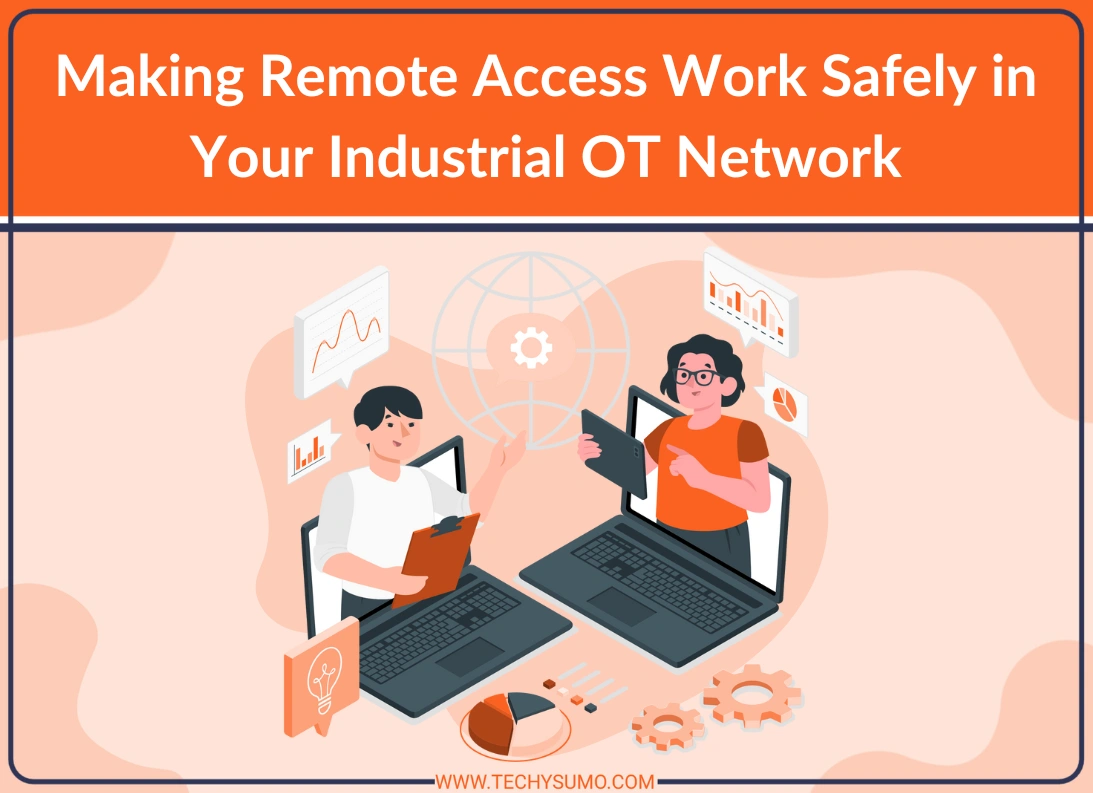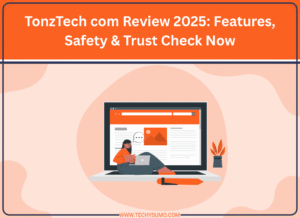Here’s something that keeps OT managers up at night: you need remote connectivity to run efficiently, yet each access point could become your weakest link. Consider this ransomware hit industrial organizations 87% harder in 2024 compared to the previous year. For the fourth year running, this sector has worn the unfortunate crown of being the #1 ransomware target.
We’ve moved past simple data protection. Now you’re looking at potential physical damage, halted production lines, and safety crises that drain millions from your bottom line. The real puzzle? Enabling remote operations while keeping your critical infrastructure locked down tight.
Table of Contents
- What Makes Remote Access Critical for OT
- Why Connectivity Makes Financial Sense
- OT Network Security Headaches You’ll Face
- When Legacy Systems Become Liabilities
- The Vendor Access Maze
- When IT Meets OT: Lost in Translation
- Building Your Secure Remote Access Framework
- Going Zero Trust
- Segmentation That Actually Works
- Access Control That Matters
- Implementation Best Practices You Can Use Today
- Security Approach Comparison
- Protecting What Powers Your Operations
- FAQs on OT Remote Access Security
What Makes Remote Access Critical for OT
Remote connectivity has fundamentally reshaped industrial operations. It’s changed everything about how you approach security. Your engineers and technicians need eyes on equipment, diagnostic capabilities, and update deployment all without physically showing up at every facility.
The Efficiency Factor
Remote access eliminates wasted travel time and accelerates issue resolution. Picture this: equipment failure strikes at 2 AM in a plant three hours away. Your technicians can diagnose problems, often resolving them completely without leaving home. Production keeps humming. Minor hiccups don’t snowball into catastrophic shutdowns.
There’s another angle here. The skilled OT workforce is shrinking fast. Remote access allows you to pool expertise across multiple sites rather than maintaining complete teams at each location. Smart resource allocation becomes possible.
Also Read
Why Connectivity Makes Financial Sense
The numbers tell a compelling story. Organizations deploying, ot security frameworks for remote access consistently report lower maintenance expenses and better uptime metrics. Equipment vendors can service machinery remotely, eliminating costly technician dispatches.
But here’s the catch: these advantages arrive with serious risks. The exact pathways enabling convenient access can transform into attacker entry points when security gets sloppy. That’s why investing in reliable, high-bandwidth network infrastructure—such as optical transport services—is becoming essential. These services ensure that remote data transmissions between control centers, plants, and cloud systems happen with minimal latency and maximum security, creating a stable foundation for advanced OT connectivity.
OT Network Security Headaches You’ll Face
Your industrial environment presents security challenges that simply don’t exist in standard IT networks. Recognizing these hurdles is essential before you can deploy to security controls that actually function in operational contexts.
When Legacy Systems Become Liabilities

Most industrial facilities operate equipment installed decades ago. Cybersecurity wasn’t part of the design conversation because these systems lived in isolated bubbles. Now they’re connected, yet they lack fundamental security features think authentication protocols or encryption.
You can’t treat these systems like office computers. Many run operating systems that lost vendor support years ago. Attempting updates risks breaking mission-critical processes. This creates an impossible situation where you’re protecting systems incapable of protecting themselves.
The Vendor Access Maze
Industrial operations typically involve dozens of vendors requiring access to specific equipment. Each vendor relationship opens a potential security vulnerability. Organizations running comprehensive industrial cybersecurity programs enforce strict vendor access policies, but relationship management demands constant oversight.
Traditional VPN solutions fall short in OT settings. They grant vendors excessive access, allowing them to reach systems far beyond their legitimate work scope.
When IT Meets OT: Lost in Translation
IT teams and OT teams might as well speak different languages. Their priorities clash constantly. IT obsesses over data confidentiality; OT prioritizes availability and safety above all else. Attackers exploit this disconnect ruthlessly.
Research from the International Research Journal of Modernization reveals something fascinating: automated threat detection systems slash incident response times by over 70% while hitting 98% threat detection accuracy in critical infrastructure settings. These technologies bridge that IT-OT security divide by delivering protection that doesn’t interfere with operations.
Building Your Secure Remote Access Framework
Effective remote access security demands multiple layers addressing different threat vectors. You need frameworks balancing security requirements with operational realities.
Going Zero Trust
Zero trust operates on one principle: trust nobody by default. Every access request undergoes verification. Users get minimal permissions—exactly what their tasks require, nothing more. This philosophy fits OT environments perfectly because limiting lateral movement is paramount.
Don’t expect overnight transformation. Start with your highest-risk areas and expand methodically. This phased rollout lets teams learn and adapt without operational chaos.
Segmentation That Actually Works
Proper segmentation walls off critical systems from less secure network zones. You’re creating distinct areas for different functions and tightly controlling traffic flow between them. Done right, segmentation contains threats and stops them from spreading throughout your infrastructure.
If you’re working toward nerc cip compliance, specific segmentation requirements apply. Even if you’re in other sectors, these regulations offer valuable frameworks addressing core security principles for critical infrastructure.
Access Control That Matters
Multi-factor authentication isn’t optional for OT remote access, it’s mandatory. Role-based access controls ensure users only reach systems relevant to their jobs. Regular access log audits reveal unusual patterns suggesting credential compromise.
Recording sessions provide accountability and incident reconstruction capabilities. This visibility proves essential for security investigations and compliance documentation.
Implementation Best Practices You Can Use Today
Successful remote access security blends technology with clear policies and ongoing vigilance. You need actionable steps that won’t paralyze operations.
Know Your Assets First
You can’t defend what you can’t see. Start by cataloging every device and connection in your OT environment. This inventory becomes your foundation for all subsequent security work.
Asset discovery tools help, but they’re imperfect in OT networks. Manual verification often catches devices that hide from standard scanning methods.
Write Policies That Work
Document who accesses what, when, and under which circumstances. Both IT and OT teams need input here to ensure policies remain practical and effective. A solid cybersecurity guide customized to your operational requirements dramatically accelerates new team member onboarding and clarifies expectations.
Policies need teeth. Technology can automate compliance verification and flag violations immediately.
Never Stop Improving
OT cybersecurity isn’t a checkbox—it’s an ongoing commitment. Regular security assessments uncover new vulnerabilities as your environment changes. Incident response drills ensure your teams know their roles when things go sideways.
Learning from close calls and actual incidents strengthens defenses over time. This continuous improvement mindset matters in a world where threats never stop evolving.
Security Approach Comparison
| Approach | Strengths | Limitations | Best For |
| Traditional VPN | Simple to implement, familiar to users | Provides broad network access, difficult to monitor | Low-complexity environments with trusted users |
| Jump Servers | Provides centralized access point, enables session recording | Requires maintenance, can become single point of failure | Organizations needing detailed access logs |
| Zero Trust Network Access | Granular control, reduced attack surface | Complex initial setup, requires cultural shift | High-security environments with diverse user needs |
| Air-Gapped Networks | Maximum isolation from external threats | Limits operational efficiency, expensive to maintain | Systems with highest security requirements |
Protecting What Powers Your Operations
Securing remote access in OT networks has shifted from nice-to-have to business-critical for organizations maintaining both operational efficiency and security. The threats are real, growing, and dangerous. But practical solutions exist that don’t force you to choose between productivity and protection.
Organizations implementing layered security controls, maintaining clear policies, and continuously monitoring their environments can safely enable the remote access their operations demand. The trick is starting now rather than waiting for an incident to force your hand. Your industrial systems are too valuable to leave exposed to preventable threats.
FAQs on OT Remote Access Security
1. How do we balance security with operational needs in real-time?
Modern solutions deliver security without blocking legitimate work. They continuously verify users and grant access based on current context and risk levels rather than rigid rules creating friction.
2. What’s the biggest mistake organizations make with remote access?
Most organizations treat OT remote access identically to IT remote access. They deploy the same tools and policies without considering operational requirements, creating either security gaps or operational roadblocks that teams circumvent.
3. How long does secure remote access implementation typically take?
Timelines vary dramatically based on environment complexity. Most organizations achieve initial protections within 3-6 months, but building a comprehensive program requires 12-18 months of continuous refinement and expansion.






